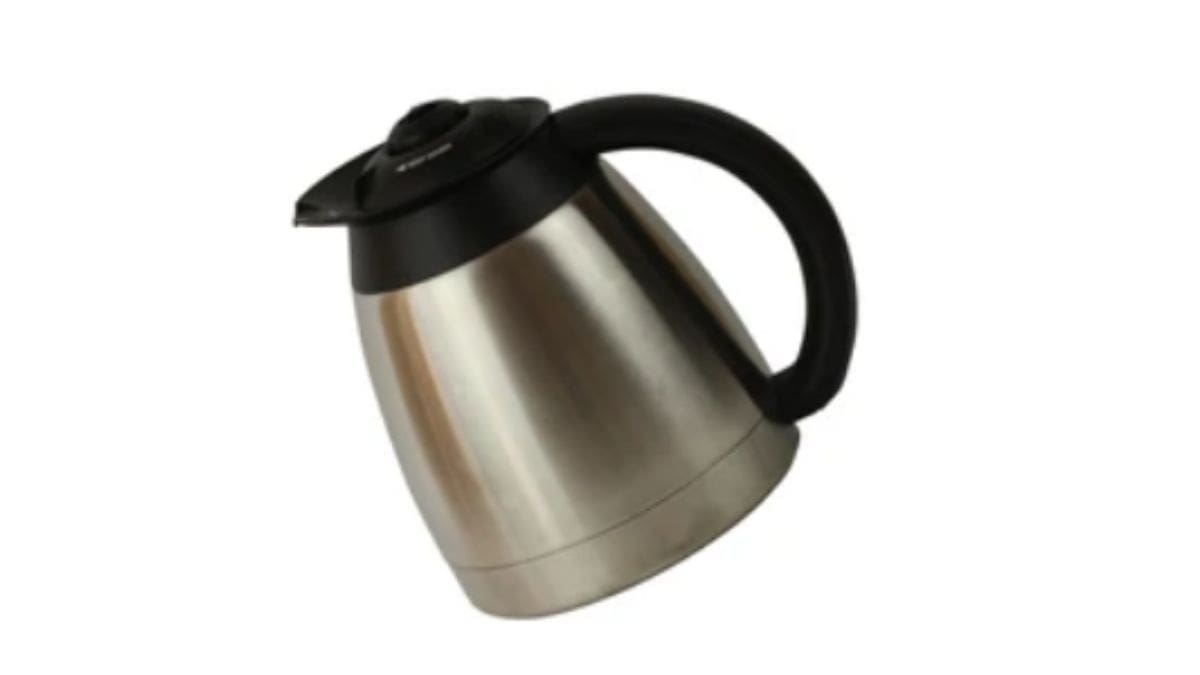How to clean a stainless steel coffee pot
A stainless steel coffee pot keeps your hot coffee hot for much longer than a typical glass vessel, and unlike plastic, it doesn’t impart nasty flavors into your drink. How do you clean a stainless steel coffee pot then?
Introduction
Table of Contents
Before you reach for the dishwashing detergent, try a couple of gentler options made with more natural components. Depending on the degree of your coffee pot stains, there are a few techniques worth considering. The thing to remember is that all of these methods will require a little more effort than the dishwashing detergent method!
You must clean the pot carefully after each use to extend its lifespan and safeguard the flavor of your morning cup of joe. If you wait too long, you’ll have semi-permanent coffee stains.
You’ll be amazed at how well these tactics work once you’ve tried them. Cleaning these pots is simple, provided you use the appropriate cleaning products. We hope that the directions provided here will come in handy the next time you need to clean your coffee pot.
How to clean a stainless steel coffee pot
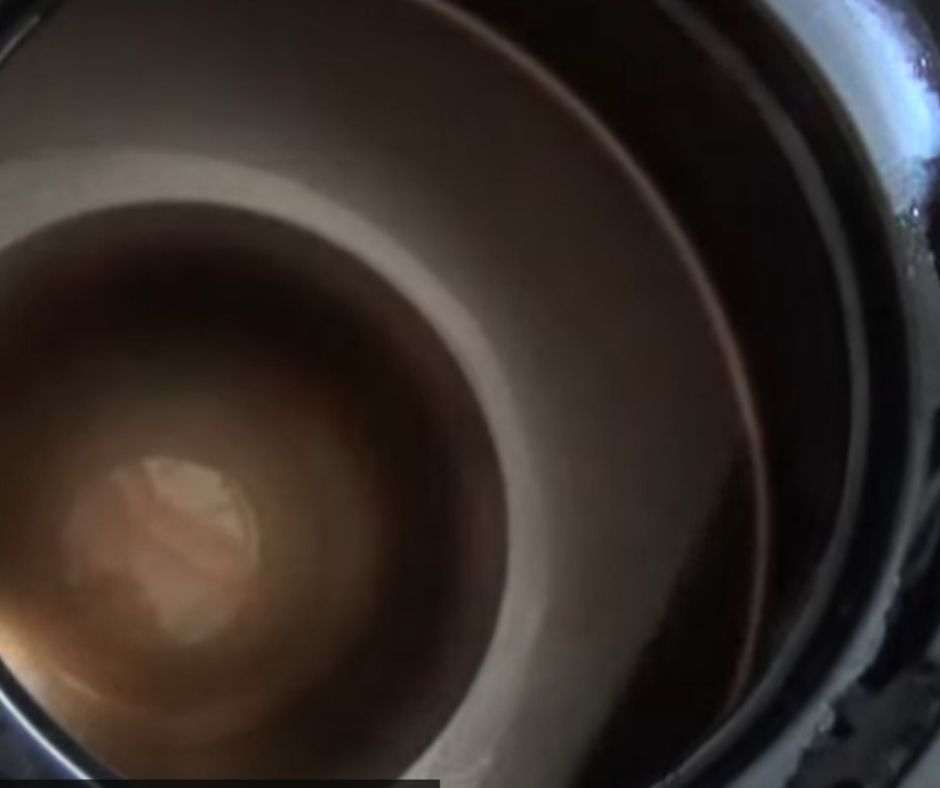
Stain removal should be done on a regular basis to keep your coffee pot in top shape. You’ll also save hours of scrubbing and attempting to remove these stains. We’ll look at how to clean a stainless steel coffee pot in this article. Because there are so many different types of coffee pot cleaners on the market, finding the ideal one for you might be difficult.
Coffee pots, such as stainless steel carafes or coffee percolators, can be challenging to clean, not only because coffee stains are notoriously difficult to remove, but also due to their design. The majority of them have a wide base and small openings to keep the coffee steaming hot.
You might be able to get your hand in, but the opening is too narrow to maneuver around while cleaning. To assist you in cleaning your pot, we have supplied practical options.
How do you clean a stainless steel coffee pot with vinegar?
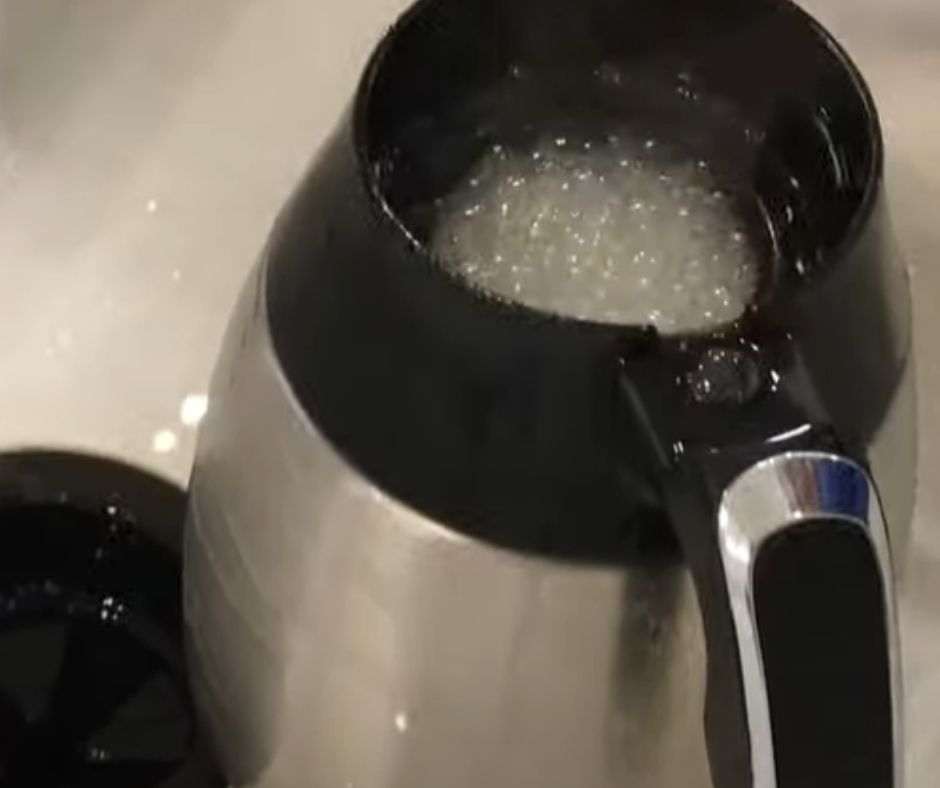
Vinegar is one of the world’s oldest cleaning agents. Its acidic characteristics make it a good cleanser, and it’s great for getting rid of any remaining coffee stains. Cleaning with vinegar is a simple and straightforward procedure.
Simply pour a vinegar-water mixture into the coffee pot, heat it, leave it for a while (preferably overnight), and then rinse. The clean, gleaming appearance of your coffee pot carafe will be restored!
The Use of Vinegar
As previously said, vinegar is an excellent cleaning agent. Here’s how to put it to good use.
In the stainless steel coffee pot, place roughly six huge ice cubes. Add two tablespoons of ordinary table salt and half a cup of white vinegar to the mixture. Swirl everything in the pot gently until the ice has entirely dissolved. This will give those obstinate stains some abrasion. Thoroughly rinse (you may want to rinse a few times or even soak with warm water to completely remove the vinegar taste).
OR
Remove as many stains as you can from the coffee pot by rinsing it thoroughly. If your pot contains a coffee or water filter, make sure you take it out before cleaning it.
Fill the pot halfway with vinegar and the rest with water. The proportions should be the same. The vinegar will release stains, kill bacteria, and get rid of any mold that has built up in the pot.
If you’re using a drip coffee maker, set it to the drip setting and leave the mixture to steep for up to 20 minutes in the carafe. This procedure can be repeated until your carafe is clean.
If you’re using a regular pot, leave the mixture to sit for a longer period of time, preferably overnight.
Remove the mixture from the pot and rinse it with clean water.
How do you clean a badly stained coffee pot?
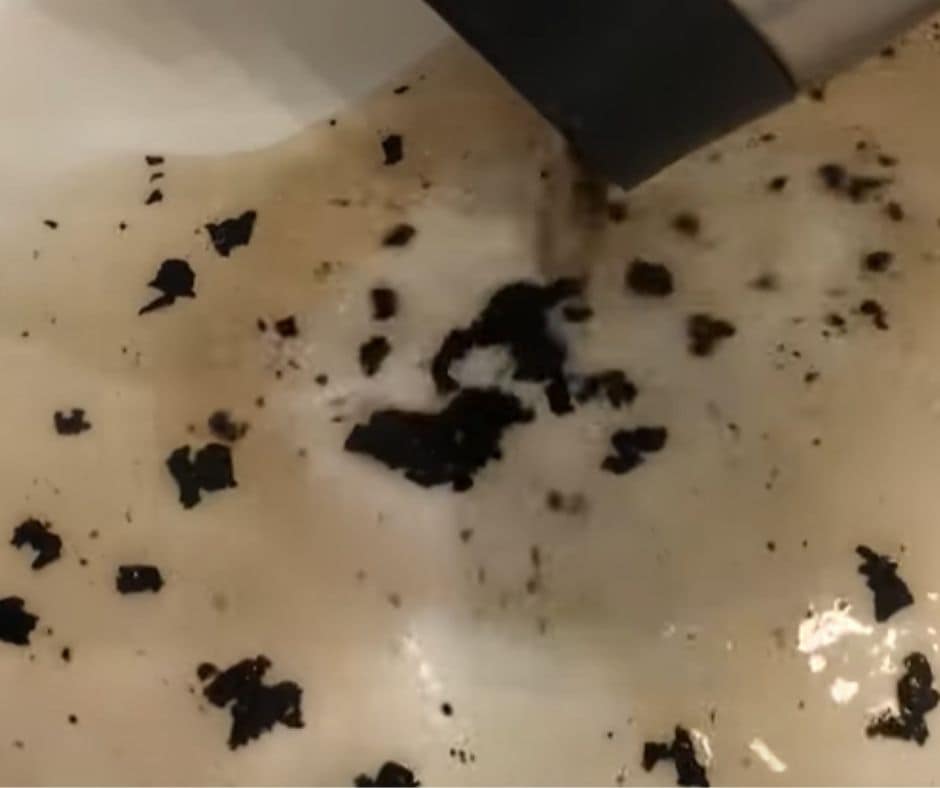
You have a variety of choices for keeping your coffee pot clean. There are numerous methods for removing stubborn stains, ranging from vinegar to baking soda and hydrogen peroxide to lemons. The majority of individuals have these cleaning chemicals on hand in their kitchens. So take a look around and select a few to put to good use.
Furthermore, the cleaning procedure is simple and straightforward.
- The use lemons
Lemons can indeed be used to clean your coffee maker. Some tough stains will not come out after using baking soda or vinegar. Then it’s time to get the big guns out.
Lemons are simple to use. Squeeze the entire contents of a lemon into the carafe or coffee pot. To amp up the heat, add a pinch of salt. Some people put enough salt in the saucepan to cover the bottom. Allow the mixture to sit in the coffee pot for many hours after thoroughly stirring it.
Return with a dish sponge and scrub the saucepan thoroughly. The end product will wow you. You can do this as long as you want until the spots disappear.
- Cleaner for Coffee Pots
It’s simple to use, inexpensive, and ideal for cleaning a glass coffee pot. To remove oils and old coffee stains from glass and metal pots, use a mixture of ice cubes and layers of table salt.
Add a layer of salt to the bottom of the carafe and enough ice cubes to cover it. Spin the pot around to ensure that the ice and salt are evenly distributed and cling to the carafe’s sides. As the ice melts, the salt will work as an abrasive, gently scouring the inside of the pot.
If you left a small amount of coffee on the flame for too long, you may need to add fresh lemons to this mixture. When you’re finished with the task, give it a thorough rinse.
How do you clean a stainless steel coffee pot with baking soda?
Pour roughly a half cup to a full cup of baking soda into the stainless steel pot, then top with warm or hot water, depending on the size of the carafe. Allow for a few minutes before scrubbing it clean with a bottle brush. Rinse the dish well.
If it doesn’t work, try mixing half a cup of hydrogen peroxide with a couple of tablespoons of baking soda, then filling the container with hot water and letting it sit for a while.
Should you wash the coffee pot with soap?
Dish soap can be used to clean a stainless steel coffee pot.
Half-fill the saucepan with boiling water from the kettle, then adds a pod of dishwashing powder or a generous squirt of liquid soap. Allow it to stay for a few minutes before scrubbing and thoroughly rinsing with a bottle brush.
What are the benefits of cleaning your coffee maker on a regular basis?
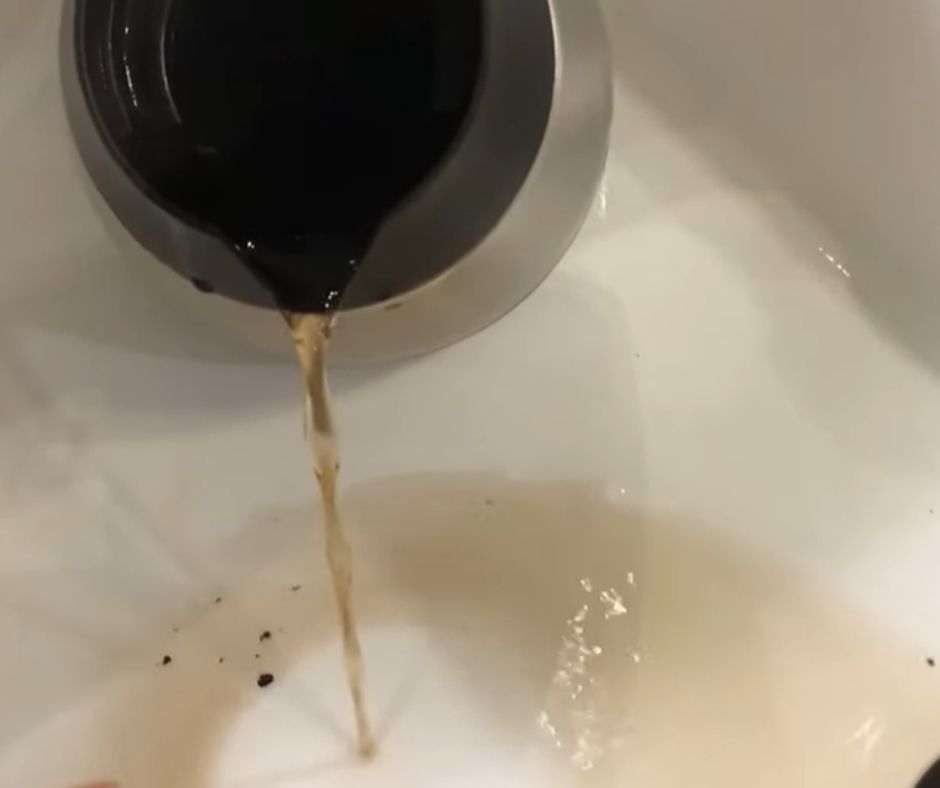
Cleaning your coffee maker will improve the quality of your drinks. Coffee contains a lot of acids, and your coffee maker might develop a burnt odor that will affect the flavor of whatever you brew in it.
Limescale, a hard white substance largely composed of calcium carbonate that forms in pipes, coffee makers, and kettles, can accumulate and slow down the rate at which your coffee maker brews coffee. Cleaning your coffee maker extends its life, and you want to retain your dependable coffee maker as long as possible, right?
7 Reasons why it is important to clean your coffee pot
- Brew Times Reduced
Calcium deposits in the heater pipes can be caused by hard water. This accumulation insulates them, lengthening the time it takes to brew. To avoid collection, clean your coffee maker properly at least once a month.
2. Avoid Overflowing Baskets
Cleaning out the coffee machine is a common solution to this problem. If the problem remains after the coffee maker has been cleaned, you may be using too much ground coffee or your grounds are too fine. Use medium ground coffee or little fewer coffee grounds.
3. Improved Flavor
Both your cup and coffee pot will have a residue from the coffee oil. To avoid accumulation, wash your coffee pot in the dishwasher (if dishwasher suitable) or with hot, soapy water. Oil residue, believe it or not, can leave a bitter taste in subsequent cups of coffee.
4. It gets rid of the build-up.
Lowering the brewing temperature dilutes the coffee tastes and lengthens the brewing time.
5. Avoid Burning Your Hot Plate
If you drop water or coffee on your hot plate, make sure to wipe it down. Spills on the plate can damage the finish, causing the coating to flake and the plate to corrode.
6. Enhances the flavor of all coffees
Whether you buy coffee directly from a local roaster or buy a can of store-bought coffee, it always tastes better when it’s brewed in a clean coffee machine. Instead of the weak and bitter coffee you receive from a unit with buildup, your coffee will be rich and full-bodied.
7. Keep Germs Out
Germs thrive in a warm, humid environment. Wet grounds should be discarded after each brew to avoid bacteria in your coffee machine. Also, after washing, leave the top open to allow the inside to dry.
How to Clean a Single-Serve Coffee Maker in Easy Steps
1. Begin by draining any remaining water from the reservoir.
2. In the sink, wash and clean any removable parts of the coffee maker with warm, soapy water. Some types even feature parts that can be washed in the dishwasher. If your coffee maker also makes espresso and has a milk steamer attachment, It’s a good idea to disassemble it and clean it now.
3. Clean around the base of the machine where the reservoir is and in the region surrounding where the pod/cup goes using a small cleaning brush dipped in vinegar while the coffee maker is partially disassembled. The plastic region in which the pod resides is also removable on some models.
4. Reusable filters, too, require a good scrub now and then to keep the grounds from becoming clogged in the mesh. I’ve found that running the reusable pods through the dishwasher isn’t as efficient as soaking it in a cup of vinegar and then brushing it clean with a little brush to release any granules and clean the fine mesh.
5. Use water that is somewhat warmer. While your Coffee Maker may not be able to warm cold water sufficiently, water that has been warmed before being poured into the reservoir may. It also aids in brewing the pot at a higher temperature, which maximizes flavor. Coffee mugs are also a breeding ground for bacteria (especially in the workplace). Remember to wash them in hot, soapy water and air dry them.
6. Run the machine without the filter for a few minutes, essentially producing cup after cup of hot vinegar. Allow the machine to stay with the vinegar solution in it for a few hours after a few cups have cycled, and then finish the rest of the cycles to ensure that the solution has come to an end through the machine.
7. Eliminate and clean the reservoir once more, and fill it with water this time.
8. To rinse out any remaining vinegar, run many more cups of plain water through the reservoir though bear in mind that vinegar is non-toxic, If there were a few drops of it in your coffee, you probably wouldn’t notice.
Tips for Keeping Your Coffee Maker in Good Working Order
After preparing cups of cocoa, tea, or soup mixes, pour an extra cup of plain water into a mug. This will assist clean the filter area and removing any remaining sugars before the next usage.
Use filtered water in the reservoir instead of tap water if you have hard water or if your machine needs to be cleaned more frequently than it should.
If you’re going on vacation or won’t be using your single-serve coffee maker for a long period of time, drain the reservoir and switch it off.
How do you clean a glass coffee pot?
Use only natural cleaners like vinegar and a few tablespoons of salt to clean your teeth. Any burnt-on coffee stains and blotches on the interior will be scrubbed away with the salt.
The Best Coffee Pot Cleaning Tool for Everyday Use
You’ll want to keep your coffee pot looking clean and new now that the trickiest stains have been removed. It’s a good idea to double-check that you have the correct tools for the job!
Most coffee pots and carafes are designed with a wide base that narrows upward to a small hole at the top. This design is meant to keep fluids warmer for longer, however, it’s not easy to clean.
- Brushes for bottles
My preferred coffee pot cleaning tool is a stiff-bristled bottle brush. What’s even better is that eco-friendly, compostable materials like wood and Tampico fiber, as well as natural horsehair bristles, are readily available.
- Scrubbing Sponge and Tongs
Don’t have a bottle brush and don’t want to spend the money? A pair of tongs and a normal kitchen sponge can also be used. (although we recommend adopting a cleaner, more efficient sponge substitute).
Use the tongs to direct the cleaning of the sponge into the coffee pot. When you’re done cleaning, remove the sponge out of the saucepan using the tongs once again!
How often should you run vinegar through your coffee pot?
Once a month, give your coffee machine an inside cleansing with vinegar and water to avoid scale build-up. Fill a pot halfway with 1/2 cup white vinegar and water, run it through my machine two or three times, then run five or six pots of plain water through the machine till the vinegar smell goes away.
Procedure:
Fill the reservoir with up to 4 cups of undiluted vinegar.
Allow 30 minutes for cooling.
Make a brewing cycle with the vinegar.
Replace the vinegar with fresh water for two to three rounds until the odor is gone.
Because mold, bacteria, and yeast thrive in moist environments, remove any unused water from the coffee reservoir and leave the lid open to air dry between uses.
Vinegar can also be used to clean single-serve coffee makers from Keurig, De’Longhi, Lavazzo, and a variety of other manufacturers.
The signals that it’s time to clean your single-serve coffee machine are as follows:
A cup of coffee is taking longer to brew than usual.
When you anticipate a large cup of coffee but the brewed batch only fills half of it.
In your brewed cup, there are extra grounds or granules.
Any strange, moldy, or mildew odors.
Mineral build-up on the machine’s visible parts.
Conclusion
Stainless steel coffee pots are attractive in the kitchen, but they require special care. If you don’t clean your coffee carafe regularly, it will rust and become destroyed.
There are several options available, and we’ve only included a handful of them here. Preserve your coffee pot clean so you don’t miss a single cup of coffee in the morning.

